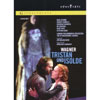Wagner Tristan und Isolde
Glyndebourne’s celebrated Tristan arrives as a most compelling film
View record and artist detailsRecord and Artist Details
Composer or Director: Richard Wagner
Genre:
DVD
Label: Opus Arte
Magazine Review Date: 8/2008
Media Format: Digital Versatile Disc
Media Runtime: 358
Mastering:
Stereo
Catalogue Number: OA0988D

Tracks:
| Composition | Artist Credit |
|---|---|
| Tristan und Isolde |
Richard Wagner, Composer
Bo Skovhus, Kurwenal, Baritone Glyndebourne Chorus Jirí Belohlávek, Conductor Katarina Karnéus, Brangäne, Mezzo soprano London Philharmonic Orchestra Nina Stemme, Isolde, Soprano René Pape, King Marke, Bass Richard Mosley-Evans, Steersman, Baritone Richard Wagner, Composer Robert Gambill, Tristan, Tenor Stephen Gadd, Melot, Tenor Timothy Robinson, Young Sailor, Tenor |
Author: Mike Ashman
Old-style analyses of the music used to talk about the “glance” motif. Lehnhoff’s staging deploys a series of heartbreaking glances: Stemme’s Isolde when Karnéus’s Brangäne tells her she’s taken the love draught, Stemme again when Tristan arrives in Act 2, Pape’s Marke as he sees the lovers together and, at Brokeback Mountain-level, Skovhus’s Kurwenal as he cradles Gambill’s Tristan then breaks away, half in fear of his lord’s death, half in fear of his feelings for him. In fact, has a Tristan ever been so deeply loved by his lady and squire as here, or felt so wretched at betraying his king? And is Skovhus actually the greatest Kurwenal yet recorded?
Roland Aeschlimann provides a geometrically attractive whorl of a standing set, concentric wooden circles telescoping towards a constantly varied horizon: a ship, a spaceship, everywhere, nowhere – perfect. The lighting (Robin Carter and Aeschlimann) has a genuine physical presence and seems to reinvent the colour blue. At the point of Isolde’s almost belated arrival in Act 3, a surreal, Ingmar Bergman-like atmosphere permeates events: she arrives from behind on high as a figure of death and wraps him in a black cloak, while Skovhus’s poignant Kurwenal gets a non-realistic, Brechtian centre-stage for his fights and death.
There are a lot of compelling Tristan DVDs on the market: Boulez/Wieland Wagner; Mehta/Konwitschny (Arthaus, 12/00); de Billy/Kirchner (Opus Arte); Jordan/Py (Bel Air); and Barenboim/Ponnelle (DG). Coming fast up the inside are Barenboim/Heiner Müller – a modern, abstract less-is-more version – and Barenboim/Chereau/La Scala – almost more emotional than this Glyndebourne set. Oh dear!
Discover the world's largest classical music catalogue with Presto Music.

Gramophone Digital Club
- Digital Edition
- Digital Archive
- Reviews Database
- Full website access
From £8.75 / month
Subscribe
Gramophone Full Club
- Print Edition
- Digital Edition
- Digital Archive
- Reviews Database
- Full website access
From £11.00 / month
Subscribe
If you are a library, university or other organisation that would be interested in an institutional subscription to Gramophone please click here for further information.




